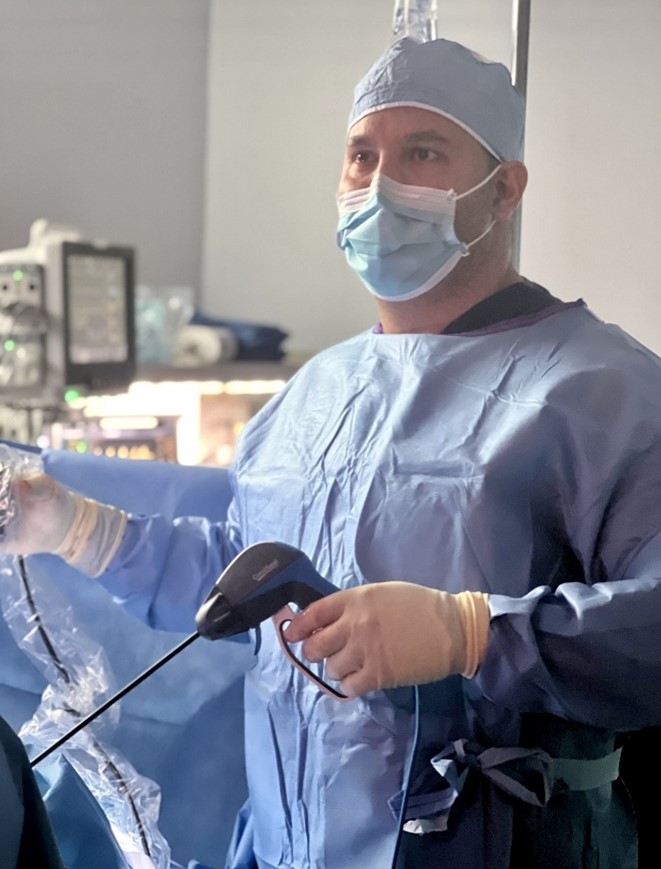Dr. Georges Akl of New York is currently practicing at Lewis County Health System in Lowville, NY. In the realm of women’s healthcare, the evolution of surgical techniques has brought forth a transformative era. In the following article, Georges Akl, a figure in the field of laparoscopic surgery, discusses the groundbreaking advancements of minimally invasive procedures that are revolutionizing women’s healthcare and setting new standards for surgical excellence.
For years, the main option for women needing a hysterectomy or other gynecological treatment was major, highly invasive surgery. But that’s not the case any longer. Nowadays, laparoscopic surgery, a minimally invasive technique, offers a less-pain alternative requiring fewer days spent in the hospital, lower risk of abdominal infection, easier recovery, and minimal scarring.
Georges Akl explains that this form of surgery has been changing the landscape of women’s healthcare for decades, but relatively recent advancements are further enhancing hysterectomies and more gynecological treatments for people around the world.
Dr. Georges Akl Explains How Laparoscopic Surgery Makes Hysterectomies a 1-Day Procedure
As of early 2016, total laparoscopic hysterectomy (TLH) moved from the new, experimental procedure list to the commonplace section, with both specialized gynecologists and residents alike perform these procedures. Provided there’s an absence of prolapse, TLH is the superior method of performing a hysterectomy, awarding women a far less risky option by negating the complication risks involved in a vaginal hysterectomy (VH).
Laparoscopy offers the surgeon improved surgical access when tackling a bigger uterus caused by fibroids or other abnormalities. Plus, the method gives practitioners more opportunity to perform treatment on other genital organs during the same surgery.
With all the advantages of total laparoscopic hysterectomy, the authors of the paper entitled Advances in Laparoscopic Surgery Have Made Vaginal Hysterectomy in the Absence of Prolapse Obsolete note there is little to no indication that VH should be an offering anymore, except in the event of prolapse.
Dr. Georges Akl says that while past research indicated VH to be superior, advances in laparoscopic surgery has ensured that TLH can now be performed as a day case, resulting in reduced hospital stays and less bleeding when compared to vaginal hysterectomies.
Robotic Laparoscopy Surgery Proves Itself as an Exciting Advancement for Women’s Healthcare
Georges Akl of New York says that in more recent history, robotic surgery is sometimes the go-to choice for gynecological laparoscopy. With steadier arms than human hands and mechanisms that could be better at fine manipulations, this option isn’t as widespread, but it’s certainly changing women’s healthcare for the better.
Despite popular misconception, robotic laparoscopy isn’t performed completely by computers. Instead, highly qualified and experienced surgeons use a computer to control the instruments. The station, located inside the operating room, allows the surgeon to precisely and steadily control the robot’s movements, allowing them to access tiny spaces with ease and attain an improved view of the operation compared to traditional laparoscopic surgery.
As it’s a fairly new implementation, the procedure is under continuous research to improve the technique and make it even better for women seeking hysterectomies and other gynecological treatments.
 The Microlaparoscopy Offers Excellent Cosmetic Results and Higher Patient Satisfaction
The Microlaparoscopy Offers Excellent Cosmetic Results and Higher Patient Satisfaction
Laparoscopy is, as mentioned, minimally invasive, but microlaparoscopy takes that to a whole new level, creating smaller, mere 3mm incisions on the abdomen for a near-scarless results. As such, it boasts better patient satisfaction rates and incredible cosmetic results.
Dr. Georges Akl explains that surgeons who perform this technique require advanced laparoscopic skills to ensure accessing the abdominal cavity through such small ports has the following benefits:
- Faster recovery
- Decreased level of tissue damage
- Lower risk of infection while healing
- Reduction in provided pain scores
- Considerably reduced scarring on the incision site
- Essentially no risk of herniation at the port site
At the moment, microlaparoscopy isn’t offered for hysterectomies. However, Georges Akl says that the procedure is performed to diagnose and investigate a wide array of conditions, including:
- Female subfertility investigations
- Scar tissue (i.e., adhesions) from previous surgeries or infections
- Endometriosis (i.e., where little pieces of the womb lining are discovered outside the womb)
- Pelvic inflammatory disease (PID)
- Unexplained abdominal or pelvic
- Appendicitis (i.e., swelling of the appendix)
- Ovarian cysts (i.e., a sac filled with fluid that forms in the ovaries)
- Ectopic pregnancy (i.e., a pregnancy that occurs outside the womb)
Georges Akl of New York notes that the minute scar left behind by microlaparoscopy procedures provides women with the extra confidence they need to continue leading fulfilling lives after treatment. Couple the mental health benefits and the aesthetic benefits with the reduced chance of vaginal bleeding and other complications of traditional, vaginal procedures, and it’s no wonder health care professionals laud them for transforming the female health environment for the better.








